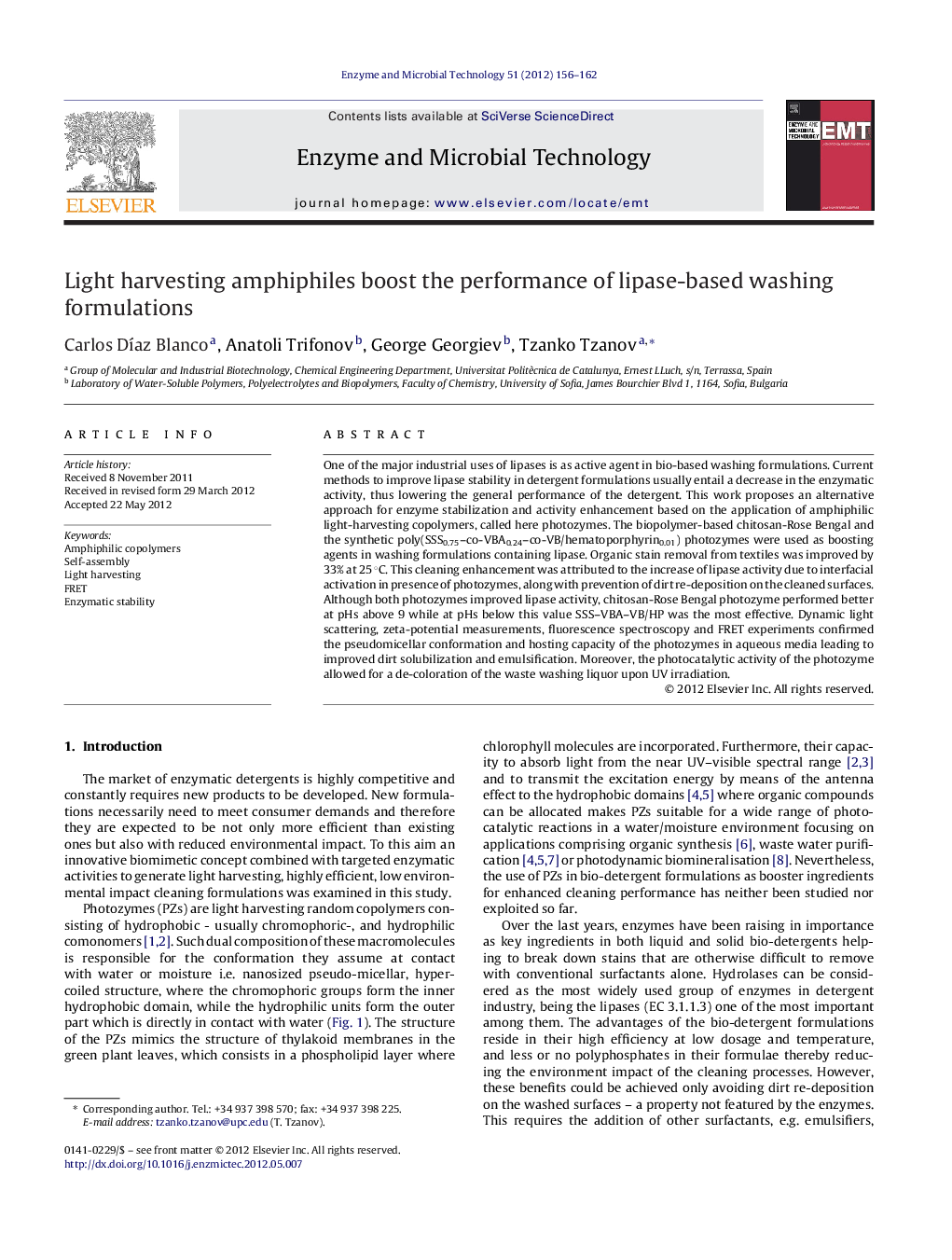| Article ID | Journal | Published Year | Pages | File Type |
|---|---|---|---|---|
| 17437 | Enzyme and Microbial Technology | 2012 | 7 Pages |
One of the major industrial uses of lipases is as active agent in bio-based washing formulations. Current methods to improve lipase stability in detergent formulations usually entail a decrease in the enzymatic activity, thus lowering the general performance of the detergent. This work proposes an alternative approach for enzyme stabilization and activity enhancement based on the application of amphiphilic light-harvesting copolymers, called here photozymes. The biopolymer-based chitosan-Rose Bengal and the synthetic poly(SSS0.75–co-VBA0.24–co-VB/hematoporphyrin0.01) photozymes were used as boosting agents in washing formulations containing lipase. Organic stain removal from textiles was improved by 33% at 25 °C. This cleaning enhancement was attributed to the increase of lipase activity due to interfacial activation in presence of photozymes, along with prevention of dirt re-deposition on the cleaned surfaces. Although both photozymes improved lipase activity, chitosan-Rose Bengal photozyme performed better at pHs above 9 while at pHs below this value SSS–VBA–VB/HP was the most effective. Dynamic light scattering, zeta-potential measurements, fluorescence spectroscopy and FRET experiments confirmed the pseudomicellar conformation and hosting capacity of the photozymes in aqueous media leading to improved dirt solubilization and emulsification. Moreover, the photocatalytic activity of the photozyme allowed for a de-coloration of the waste washing liquor upon UV irradiation.
► Amphiphilic light-harvesting polymers were used as boosting agents in enzymatic formulations. ► Self-assembly of such polymers (photozymes – PZs) allowed for organic dirt solubilization. ► PZs improved stain removal of lipase based formulations by 33%. ► PZs properties were studied and confirmed by Z-potential, DLS and FRET experiments. ► Color degradation of waste washing liquors was achieved upon UV light irradiation.
